Chicken Healthcare
Chickens are no different to humans and are susceptible to illness and disease.
Chickens can get sick too! 🤒
They can get colds, depression, die from heart attacks or suffer from reproductive disorders. Generally birds are not good at being ill and usually show it at the last minute when it is too late. A sick bird will be listless, have drooping wings, a dull comb, sitting separate from the rest of the flock, its feathers will be fluffed up and it will be generally looking miserable. The best thing is to isolate the bird from the rest of the flock. Place the sick bird in a warm, dry place with feed and water. The options for unwell birds are rather limited; either choose to take your sick chicken to the vet or looking to diagnose and treat the bird yourself. Depending on the degree of unwellness your bird may take a week or more to recover or could sadly succumb. Please do not leave unwell birds to suffer, it is best to be humane than let an animal suffer unnecessarily.
Maintain good practices ✔️
Having good poultry housekeeping and management of your flock can go a long way to avoiding a lot of common problems. The key to avoiding diseases is to have a few simple good housekeeping rules. Poultry that have spent their lives on one property generally become resistant to certain diseases within that environment. If you are introducing new birds to your flock it is best to quarantine them. Some breeders never introduce birds for the fear of disease. Hatching eggs is a good way to introduce new blood lines.
Monitor your flock daily 👀
Keep chook houses clean and free of mites and make sure accommodation is dry and draught free. Check birds regularly for internal and external parasites. Pick your birds up and and give them a regular health check. Feel their weight and general condition; are they in good nick or too thin? Is the breast bone sticking out or well padded? Wild birds are a real pest and carrier of many avian diseases which they can pass on to your chooks. Stop sparrows sharing the hen house and feed of your chooks. Use the correct wire netting size and step- on feeders to reduce sparrow contamination. Keep your birds healthy and well feed on a nutritionally balanced diet. Wash out feeders and drinkers regularly. Never feed out mouldy, spoiled or wet feed. Regulary monitor your chooks droppings as this is a good clue to the health of your birds.
Reduce stress, pests and disease 😷
In summer heat stress is something to be aware of so make sure your birds have access to ample fresh water and plenty of shade. Keep young birds away from adult birds whilst they are gaining their immunity. Be aware of visitors carrying disease in on their footwear and clothes from their poultry areas to yours. Buy birds from a reputable source that practice good poultry hygiene. Set rat, stoat and ferret traps around the boundaries of sheds and in your poultry area. Take time to check on your flock each day and monitor the daily health and well being of your chooks.

Learn How to Spot and Identify Common Health Issues and Keep Your Chickens in Tip-Top Shape
Appletons Guide To Keeping Happy, Healthy ChickensWorming Your Poultry is Best Practice
Many of us have kept chickens for years and have never given much consideration to worming our chooks, whilst others do it routinely. It is really a matter of personal philosophy as to which regime you choose to follow. Our recommendation would be to understand worms life-cycles, discover what the different types of worms and how they impact on the way you keep your flock and then make an informed decision. Have a go at digesting our blog on worming and try putting a few off these good husbandry practices into your weekly chook keeping routine. Check out our 10 tips to keep on top of worms - these will go a long way to reducing a potential worm infestation and you will have happier and healthier hens.
Should I Be Worming My Chickens?

Moulting is Normal
Moulting is not a disease and a perfectly natural process for a hen to go through every year.
Yes, every year your chicken will replace it's feathers! Please do not dispatch your birds if they start to loose feathers and moult. Most hens spend app. 9 months of the year laying and app. 3 months shedding their feathers and growing new ones in preparation for the new season. It takes a huge effort and lots of calcium and protein to produce eggs so hens deserve a much needed rest from laying to ensure they have enough protein and replenish their reserves for the new season.
Remember to feed your hens well during this time, even though they might not be laying they will need high levels of protein (especially animal based proteins) to replace feathers and build up calcium Checking the label on your bag of layer feed - look for 18 to 19% crude protein to support your hens.
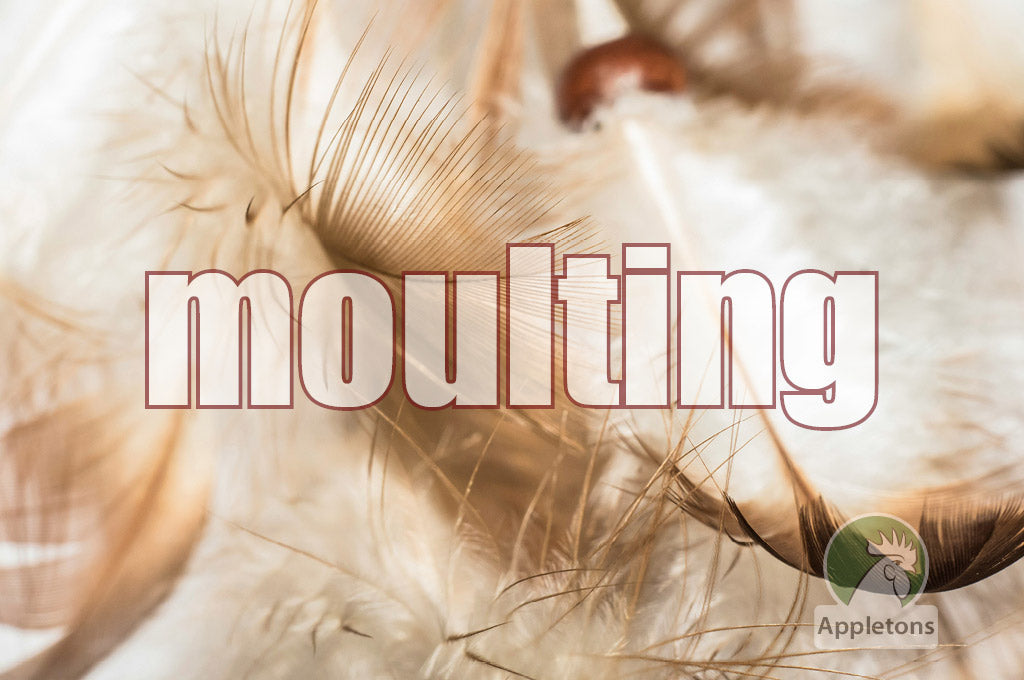

Quality Feed
Many chicken keepers believe that hens can live and lay happily on wheat; kitchen scraps and a little daily access to free range. This diet is woefully deficient in protein and fat and often too high in carbohydrates and fibre. So if you are feeding out mainly wheat or maize to your beloved chooks think again. They are not laying an egg made up of carbohydrates!
Eggs are essentially ‘protein’ wrapped in calcium so a hen needs to consume good quality animal proteins to achieve good egg output.
What you put in is what you get out! The average daily layer needs a minimum of 16 grams of crude protein to produce so look for a premium layer feed that contains 18% to 19+% crude protein for optimum results. Increase proteins will mean increased egg production.
Wheat and maize are high energy snacks but low in protein and best feed out as afternoon treats.
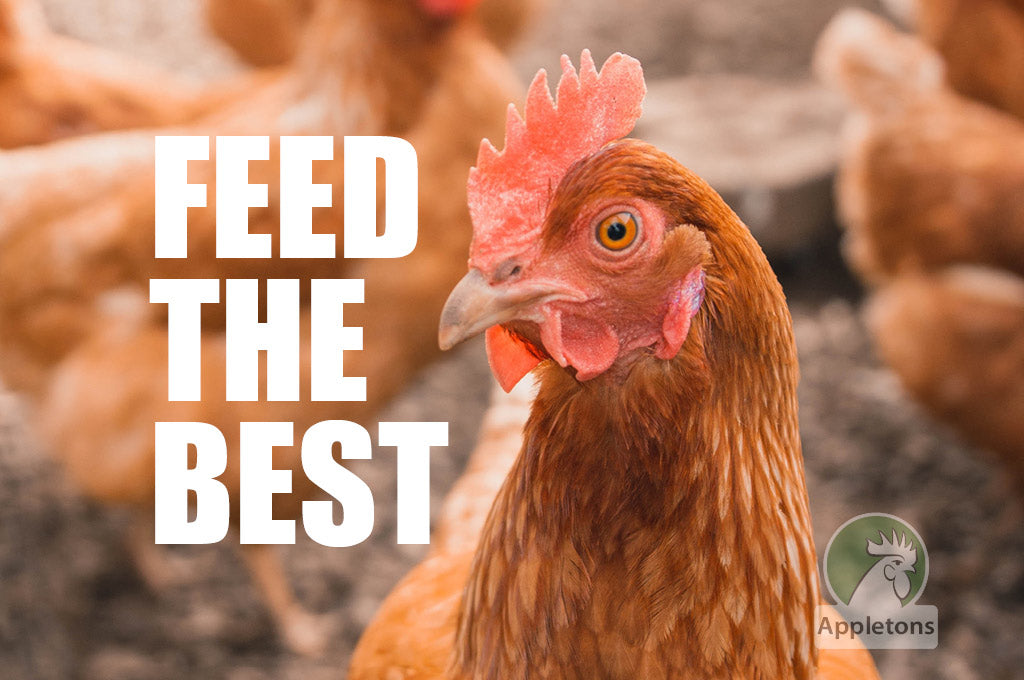

Is She Laying or Not?
It is relatively easy to determine whether or not a hen is in production. Check the condition of the comb, pubic bones, abdomen and vent. If a hen is laying, her comb and wattles should be large, red, soft, and waxy; the pubic bones should be flexible and wide apart; the abdomen should be full, soft, and pliable; and the vent should be large, moist, and free of pigment. A good layer should have more than two fingers spread between the pubic bones and three or more fingers spread between the pubic bones and the tip of the keel. When a hen is out of production, her comb and wattles may be small, pale, and shrivelled; the pubic bones are rigid and close together; the abdomen is hard and tight; and the vent is small, dry, and pigmented. Do not confuse a fatty abdomen with one that is soft and pliable due to laying condition. If she is laying she will be the picture of health!
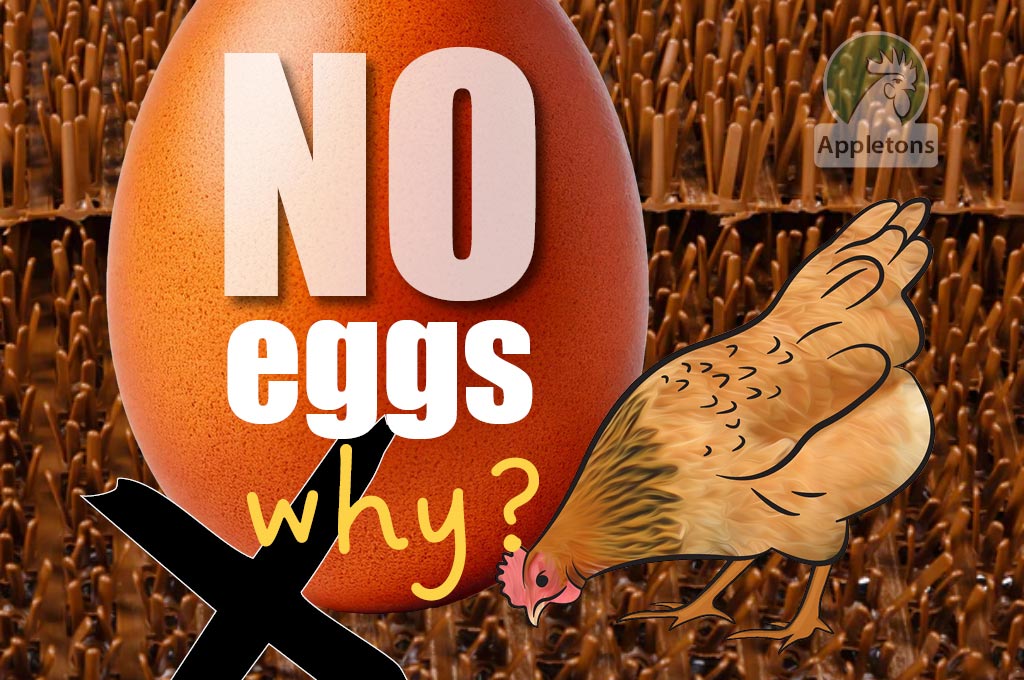

Feather Pecking?
Feather pecking is a behavioural problem that occurs most frequently amongst domestic hens reared for egg production and amongst game birds (pheasant, partridge and quail) and waterfowl.
Feather pecking occurs when one bird repeatedly pecks at the feathers of another bird.
Two levels of severity are recognised, gentle and severe. Gentle feather pecking is considered to be a natural process of establishing a ‘pecking order’ within the flock and should not cause any harm or too much concern. Examples we have noticed are birds preening each other when dust-bathing or just hanging out socially and pecking at each other’s feathers affectionately – a bit like chicken bonding with the bonus of parasite control!
Keep an eye out for severe feather pecking (bleeding) or bullying and remove the bully immediately.
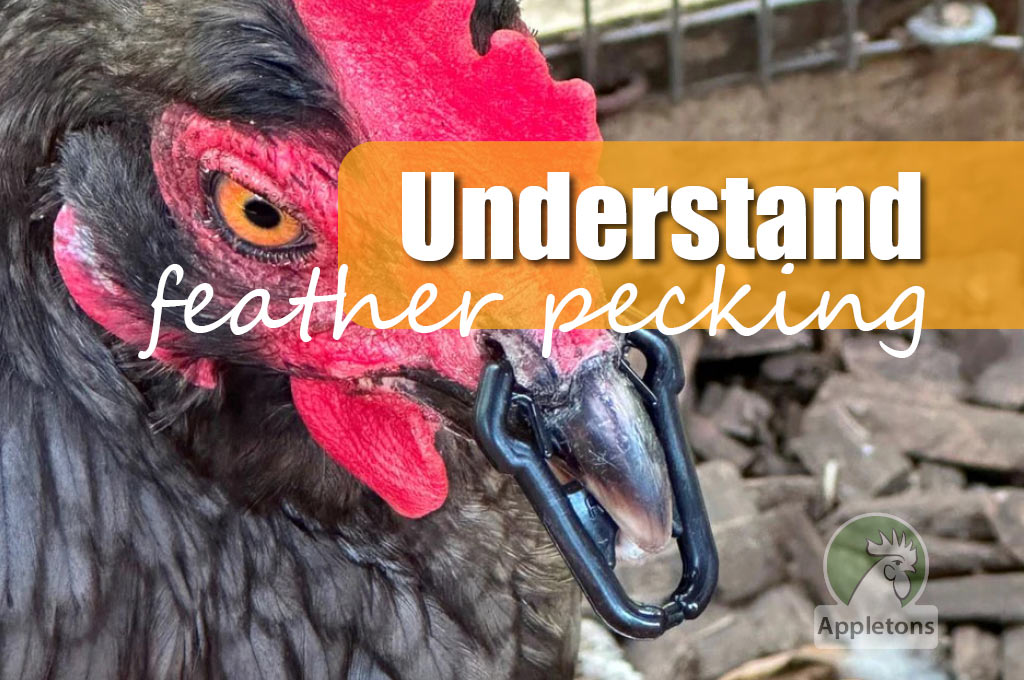

External Parasites?
Chickens taking a dust bath can be both an alarming and an amusing sight. They often appear to be having some sort of seizure or suffering from an illness as they get low down in a loose dirt bowl and have a real good shuffle in the dirt.
Chickens have oil secreting preening glands. The oils from these preening glands can secrete excess which can build up. The act of using a dust bath for chickens rids the skin and feathers of mites, other parasites like lice, dirt, dead skin cells, and built up oils. Dust bathing is a key factor in chicken mite treatment.
Although the chickens will find a way to take a dust bath, it is good to consider including a dust bath bowl in your poultry area. Find a good sized container (that will contain a chicken!) and fill up with sand, some good old garden dirt + a dash of Appletons De-Mite Powder and position under cover for your girls to enjoy.
External parasites can also be treated chemically with a Pour On Drench.
An important pastime for hens 😊 They love it!
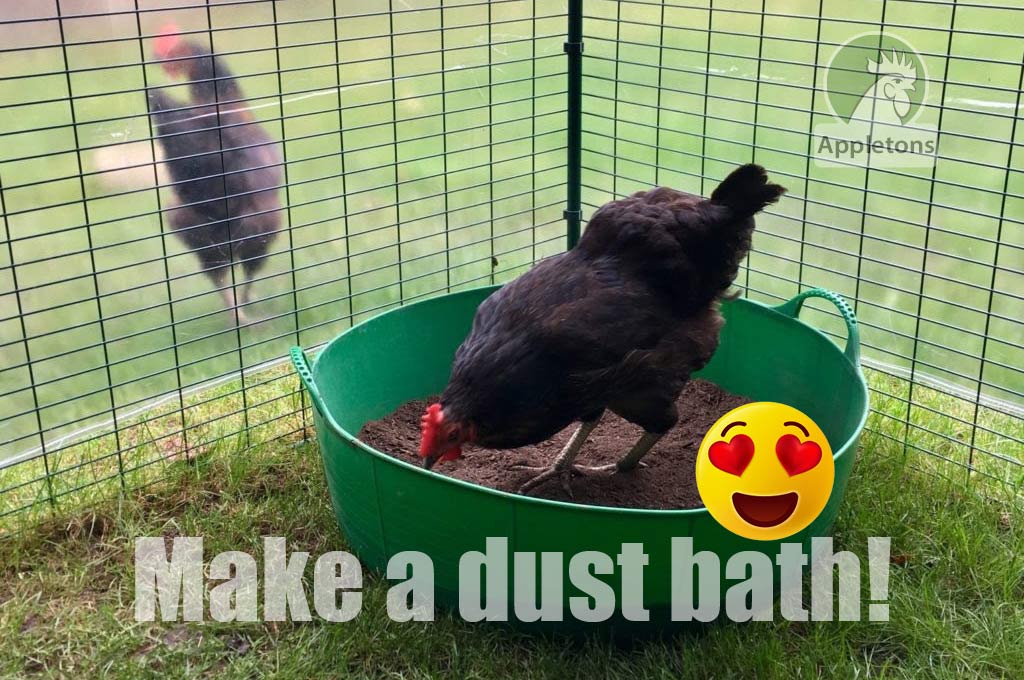
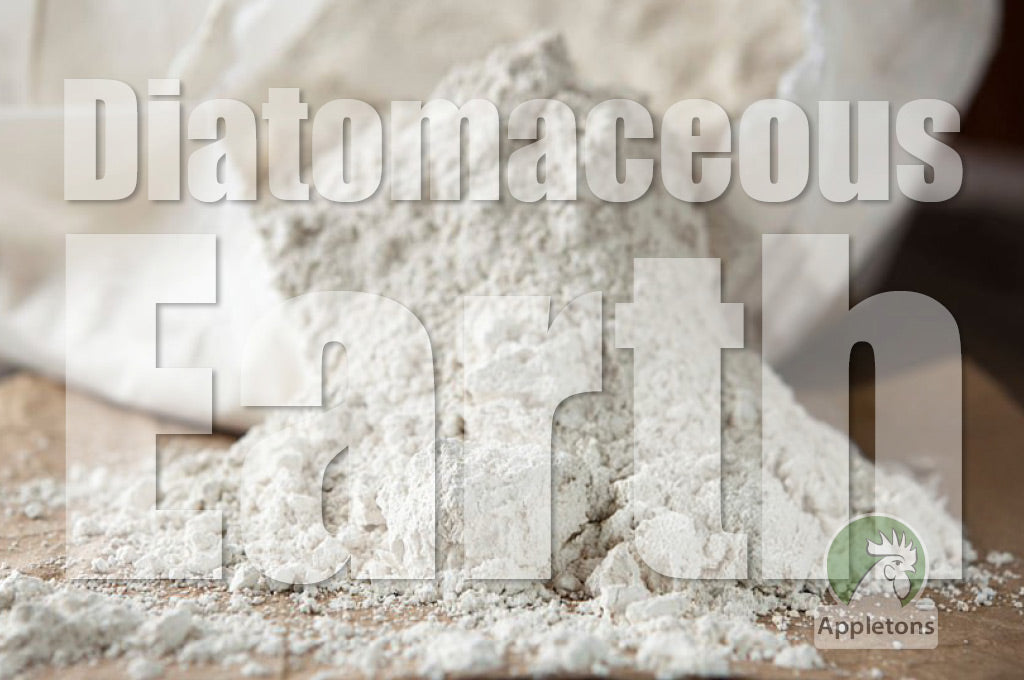
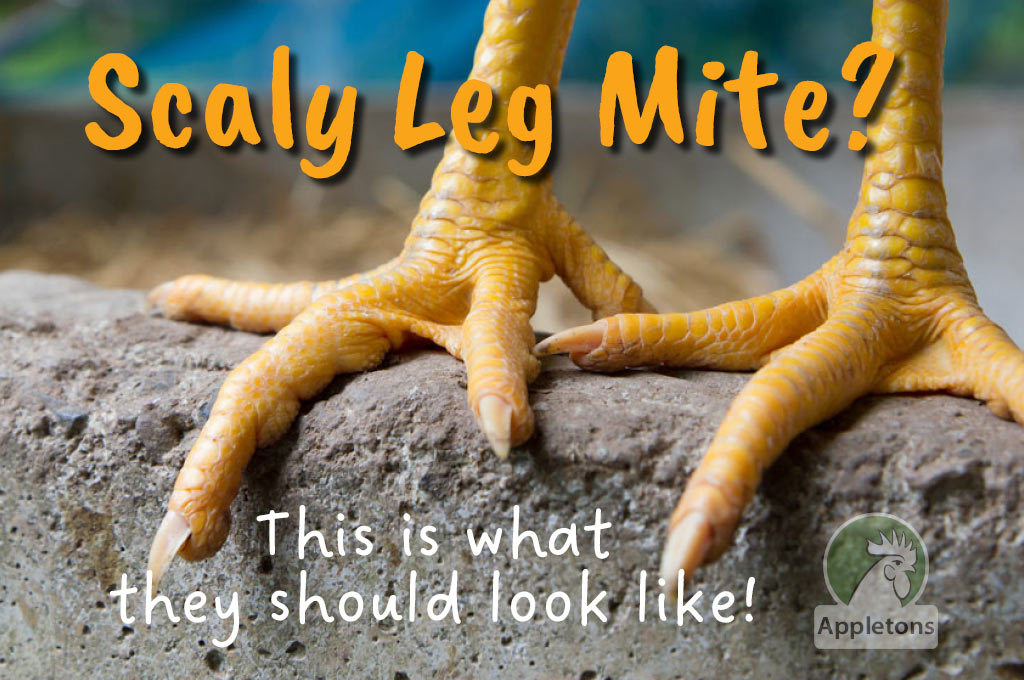
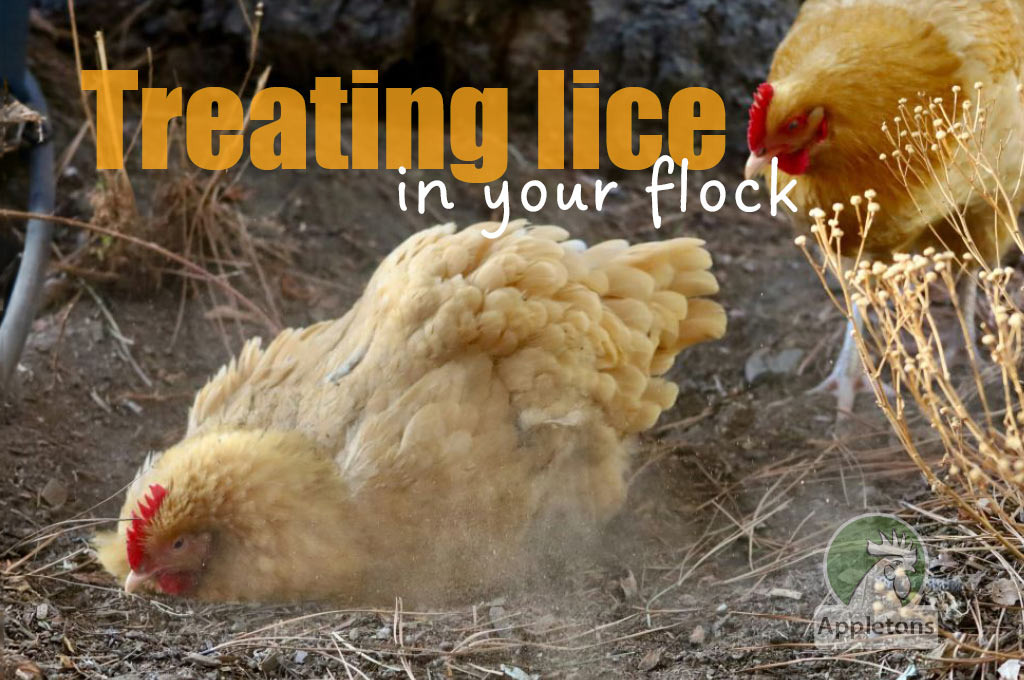
Swipe for more

Do Your Chickens Have Scaly Leg Mite?
Scaly legs on chickens are caused by a parasitic mite (Knemidocoptes mutans) that burrow under the scales on the chicken's legs. The damaged tissue weeps, which is what these mites feed on. Look out for raised scales on the legs, crusty legs, lameness (severe cases) Can also be found on the comb and wattles. In the early stages of the infection, the chicken will have mild irritation. It takes several months of infection before the scales on the legs start to lift. Repeat application with Scaly Leg Spray is recommended. You should treat all of your birds even if only one bird has scaly legs, as scaly leg mite is very contagious and it is highly likely that all of your birds will have the mite. Scaly foot is a bird ailment that is common among caged birds and also affects many other bird species.

Red Mites Can Be Killers
Red mites are a very common poultry nuisance appearing each season usually in the warmer summer months. They can reproduce rapidly so what was a few under the perch one day can turn into an infestation if not monitored and exterminated. These mites do not live on the birds but in the chook house particularly under perches and in nest boxes. They hide during the day and become active at night crawling onto the birds and sucking their blood. Detection can go unnoticed if you do not know what to look for... try looking for them at night by shining a torch on the perch. The chicken mite (Dermanyssus gallinae) or red mite is seen from time to time in all kinds of flocks. These mites are easily seen once they have had a blood meal (hence their name). Red mite have been known to transmit diseases such as fowl cholera. They are transmitted to poultry from rodents and wild birds. Unlike the northern fowl mite, red mites only spend part of their lives on their poultry hosts. They live in cracks and crevices in the poultry house and move onto the roosting birds at night to feed. Red mites can survive away from poultry for four weeks and they can also invest humans (don’t panic!) Affected birds can experience weight loss and egg drops. They can also show signs of anemia (pale combs and wattles).
LIFE CYCLE: Egg → Larva → Protonymph → Deutonymph → Adult
Between 12 and 24 hours of her first blood meal a fertilized female can lay a batch of 3 to 7 eggs in the poultry house. The eggs hatch in two to three days and the larva which do not feed, moults in a further day or so. The protonymph needs and takes a blood meal. It then moults to a deutonymph, which does not feed. The deutonymph moults to an adult stage in a couple of days. Under ideal conditions the life cycle can be completed in a week or so but, if conditions are not ideal, both the feeding stages can survive several weeks before taking a blood meal.
Treatment
There are different control treatments available but all involve thorough cleaning and treating the hen house often with a follow up treatment/s. We recommend the use of Poultry Safeguard together with Appletons De-Mite Powder for the treatment of red mites. The Poultry Safeguard dissolves the waxy shell of the red mite killing the mite and its eggs too. Appletons De-Mite Powder works well for residual red mite control and works hand in hand with your sanitiser to do a great job in keeping the red mite population under control. It is good to remove all bedding and then spray all surfaces, nooks and crannies, basically soaking the timbers. Repeat after 5 to 7 days to break the cycle. best to follow instructions on label.




Understand the basics of hen health and make keeping chickens fun!
Invest in an easy care chicken coop and maintaining healthy happy hens becomes a breeze!

